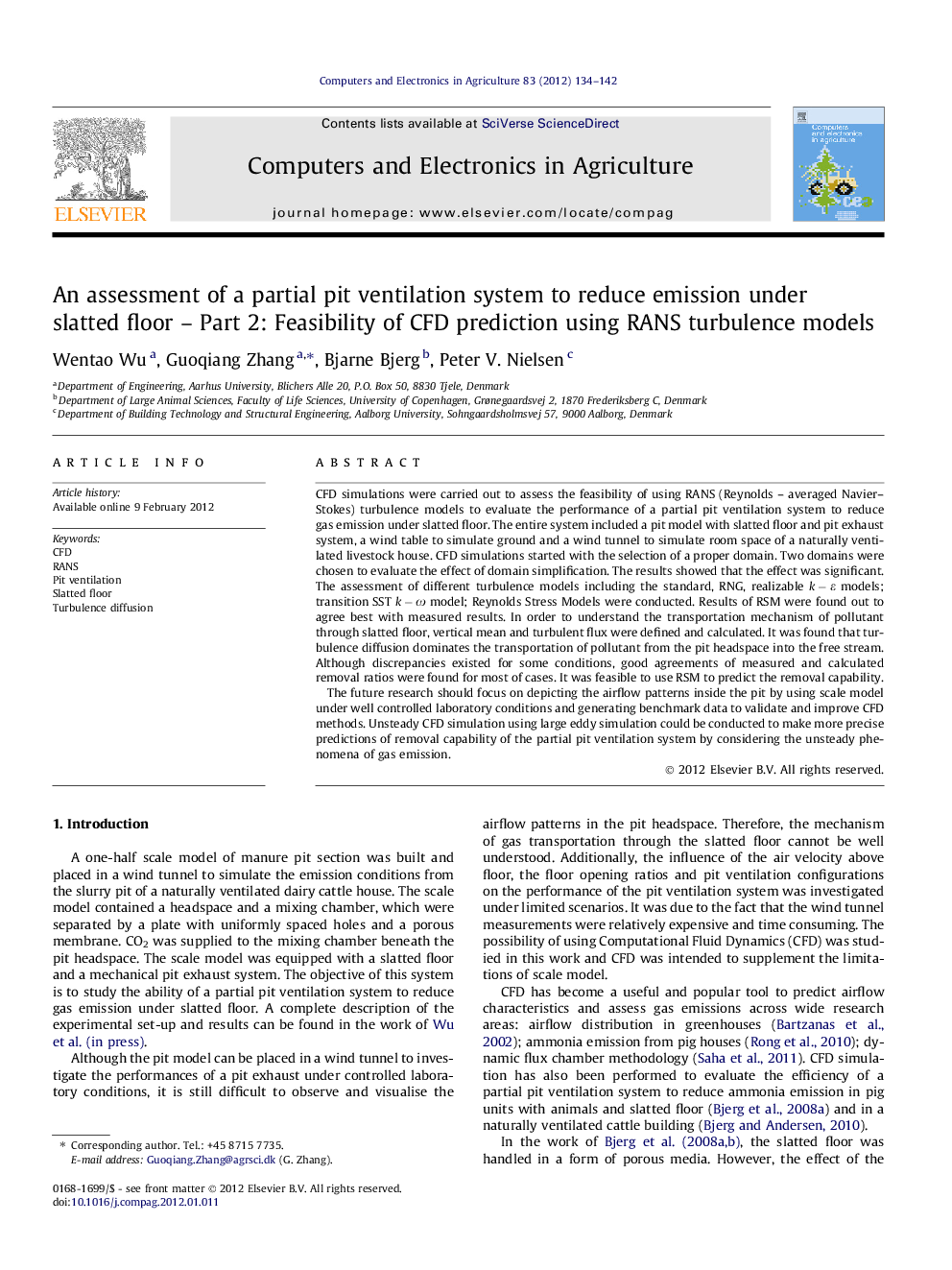| Article ID | Journal | Published Year | Pages | File Type |
|---|---|---|---|---|
| 84506 | Computers and Electronics in Agriculture | 2012 | 9 Pages |
CFD simulations were carried out to assess the feasibility of using RANS (Reynolds – averaged Navier–Stokes) turbulence models to evaluate the performance of a partial pit ventilation system to reduce gas emission under slatted floor. The entire system included a pit model with slatted floor and pit exhaust system, a wind table to simulate ground and a wind tunnel to simulate room space of a naturally ventilated livestock house. CFD simulations started with the selection of a proper domain. Two domains were chosen to evaluate the effect of domain simplification. The results showed that the effect was significant. The assessment of different turbulence models including the standard, RNG, realizable k-εk-ε models; transition SST k-ωk-ω model; Reynolds Stress Models were conducted. Results of RSM were found out to agree best with measured results. In order to understand the transportation mechanism of pollutant through slatted floor, vertical mean and turbulent flux were defined and calculated. It was found that turbulence diffusion dominates the transportation of pollutant from the pit headspace into the free stream. Although discrepancies existed for some conditions, good agreements of measured and calculated removal ratios were found for most of cases. It was feasible to use RSM to predict the removal capability.The future research should focus on depicting the airflow patterns inside the pit by using scale model under well controlled laboratory conditions and generating benchmark data to validate and improve CFD methods. Unsteady CFD simulation using large eddy simulation could be conducted to make more precise predictions of removal capability of the partial pit ventilation system by considering the unsteady phenomena of gas emission.
► The performance of a partial pit ventilation system was assessed by CFD. ► The effect of different RANS turbulence models was tested. ► Reynolds Stress Model was most promising to predict removal ratios. ► Gas emission into the free stream was mainly determined by turbulent diffusion.
